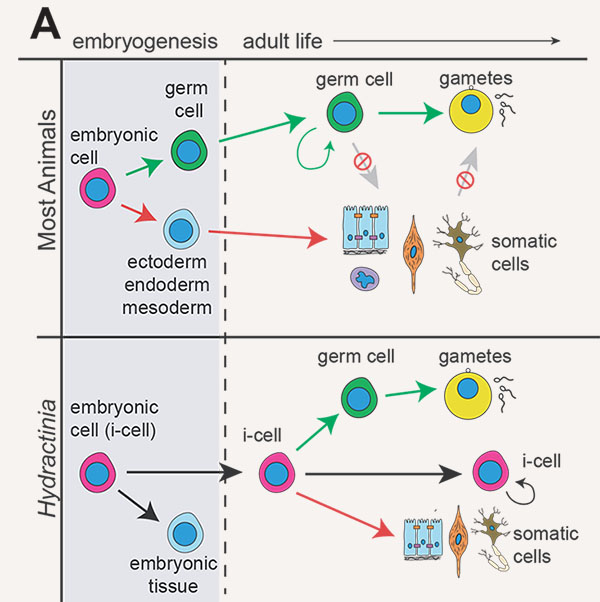Study shows how a tiny and strange marine animal produces unlimited eggs and sperm over its lifetime
NIH-supported research of Hydractinia could provide clues to human reproductive conditions
A little-known ocean-dwelling creature most commonly found growing on dead hermit crab shells may sound like an unlikely study subject for researchers, but this animal has a rare ability — it can make eggs and sperm for the duration of its lifetime. This animal, called Hydractinia, does so because it produces germ cells, which are precursors to eggs and sperm, nonstop throughout its life. Studying this unique ability could provide insight into the development of human reproductive system and the formation of reproductive-based conditions and diseases in humans.
“By sequencing and studying the genomes of simpler organisms that are easier to manipulate in the lab, we have been able to tease out important insights regarding the biology underlying germ cell fate determination — knowledge that may ultimately help us better understand the processes underlying reproductive disorders in humans,” said Dr. Andy Baxevanis, director of the National Human Genome Research Institute’s (NHGRI) Computational Genomics Unit and co-author of the paper. NHGRI is part of the National Institutes of Health.
In a study published in the journal Science, collaborators at NHGRI, the National University of Ireland, Galway, and the Whitney Laboratory for Marine Bioscience at the University of Florida, Augustine, reported that activation of the gene Tfap2 in adult stem cells in Hydractinia can turn those cells into germ cells in a cycle that can repeat endlessly.
This page was last updated on Friday, January 21, 2022
